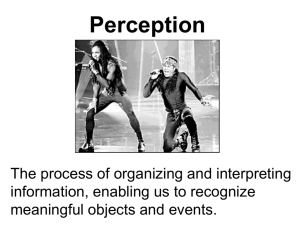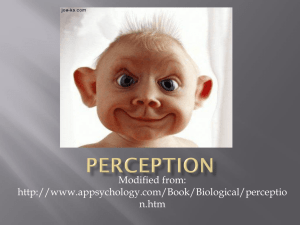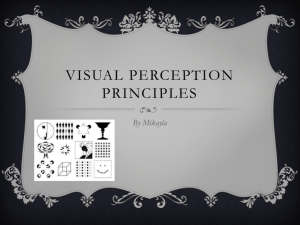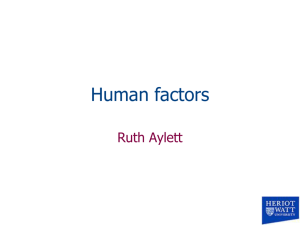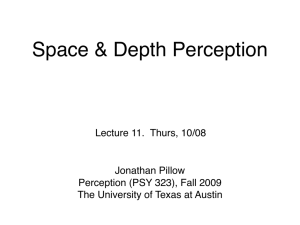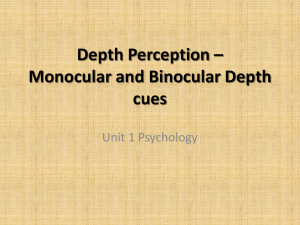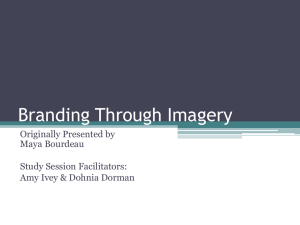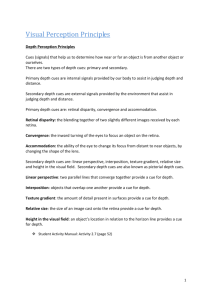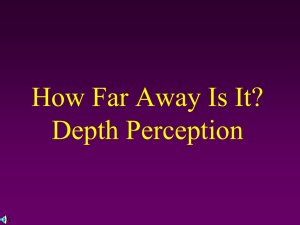Depth Principles Monocular and Binocular cues - Rosehill
advertisement
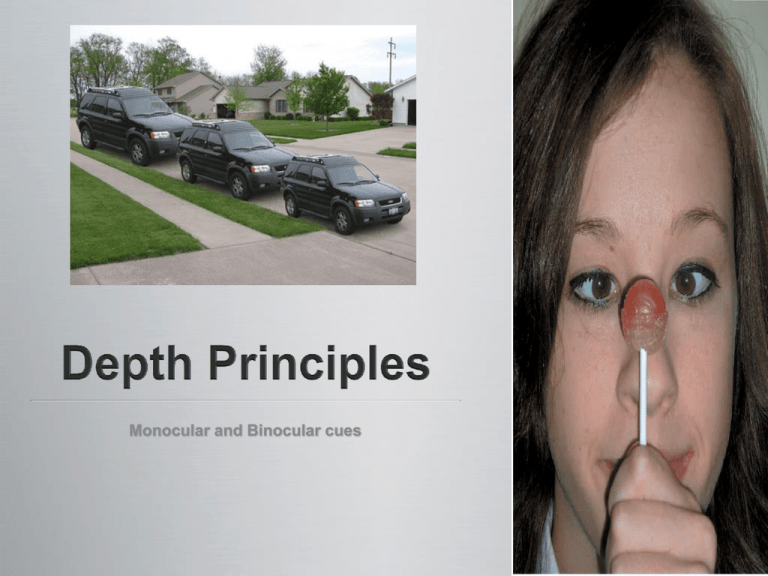
Monocular and Binocular cues Depth perception refers to our ability to judge distances If we did not have depth perception what problems would we have? How do we see the world in 3D when the image displayed on our retina is 2D? Provide the information that lets us translate 2D information into 3D Depth cues are sources of information from within our body (internal or primary depth cues) or from the environment (external secondary depth cues) that help us to perceive how far away objects are and therefore to perceive depth. Binocular – requires the use of both eye to distinguish depth. Used for close objects and used greatly to focus one these things Both binocular cues are primary internal cues Monocular – requires the use of only one eye to perceive depth, but also operates with both eyes Used for pictorial cues and over longer distances Some monocular cues are primary some are secondary Convergence Inward turning of the eyes to focus an image on the retina The brain interprets greater tension in the eye muscles as an object gets closer and less tension as an object gets further away. Works within about 6m Retinal Disparity Our eyes are about 6-7 cm apart so each retina receives a slightly different image. The difference in image decreases as the object gets further away. Work for objects up to 10m away. Images are compared in the brain and any difference give information about distance. Accomodation Accommodation involves the automatic adjustment of the shape of the lens to focus an object in response to changes in how far away the object is. The flexibility of the lens enables it to bulge to fit (‘accommodate’) close objects on the retina • and to elongate (flatten) when looking at objects that are further away. Pictorial Cues Artist use them to create depth and distance on 2D sufaces. Linear Perspactive Interposition Texture Gradient Relative Size Height in the Visual field Linear Perspective the apparent convergence of parallel lines as they recede (‘go back’) into the distance. Interposition occurs when one object partially blocks or covers another, and the partially blocked object is perceived as further away than the object that obscures it (and vice versa). Texture gradient the gradual reduction of detail that occurs in a surface as it recedes into the distance, compared with a surface that is close and perceived in fine detail. Relative Size the tendency to visually perceive the object that produces the largest image on the retina as being closer, and the object that produces the smallest image on the retina as being further away. objects being perceived must be expected to be about the same size in real life. Height in Visual Field objects that are located closer to the horizon are perceived as being more distant than objects located further from the horizon. All the Pictorial Cues in one picture of the Taj Mahal
